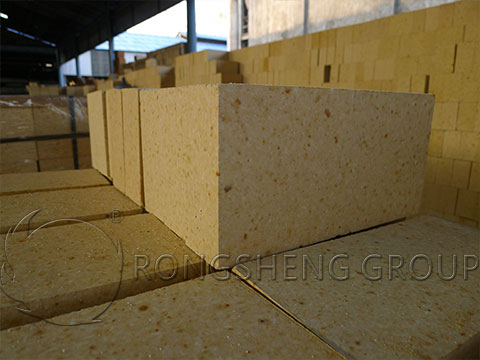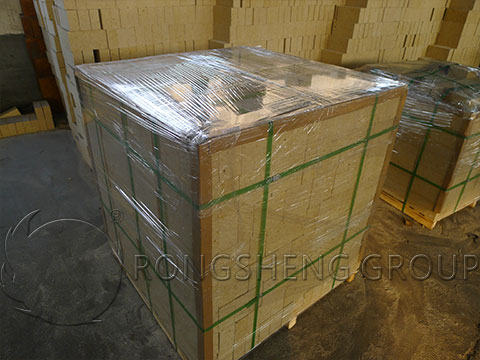SK30, SK32, SK34, SK36, SK38, and SK40 are relatively common foreign refractory brands, which are different from domestic refractory bricks. Among them, SK-30, SK-32, SK-34, and SK-35 represent clay bricks, and SK-36, SK-37, SK-38, and SK-40 refer to high alumina bricks.
Refractory bricks refer to shaped refractory products made of refractory raw materials, which can withstand high temperatures above 1580°C. The main raw material is refractory clay (bauxite) mixed with clinker (calcined and crushed clay), stirred, waked up, and pressed into shape by a strong machine. After drying, it is made by calcining at a high temperature of more than 1000 degrees.

SK32 clay brick, SK34 clay brick, SK36 high alumina brick, SK37 high alumina brick, SK38 refractory brick
High-temperature-resistant bricks are called refractory bricks. It is mixed with refractory clay into clinker (calcined and destroyed clay) and then stirred and pressed into shape. The finished product is obtained by calcining after drying. There are also silica and high alumina bricks. Can be divided into SK32, SK34, SK36, SK38, SK40 refractory bricks. Refractory bricks are mainly used for furnace lining, flue, chimneys, and other parts. According to its shape and size, it can be divided into two categories: standard shape and special shape. The specification of refractory bricks is 230 mm × 114 mm × 65 mm, and special-shaped refractory bricks can be customized according to customer needs. Refractory bricks can be divided into ordinary refractory bricks according to their refractory degree, and the refractory degree is 1580-1770 ℃. For high-grade refractory bricks, the refractory degree is 1770~2000℃. According to its chemical function, it can be divided into three types: acidic, alkaline, and neutral.
Refractory bricks SK30, SK32, SK34, and SK35 refer to clay bricks. AL2O3% (≥) 30%, 35%, 38%, 45%. It is made of refractory clay and its clinker through crushing, mixing, molding, drying, and drying. Belonging to weakly acidic refractory products, the acidity increases with the increase of SiO2 content. It has a certain corrosion resistance to acidity, but poor resistance to alkaline corrosion.
SK36, SK37, SK38, and SK40 refractory bricks refer to high-alumina bricks with alumina content of 55%, 65%, 70%, and 82%. High-alumina bauxite is selected as the main raw material, and soft raw clay is added as a binder. After molding, it is fired at a high temperature of about 1500°C. High-alumina bricks contain more than 48% Al2O3. Its refractoriness, load softening point, and refiring shortening are higher than clay bricks, and its resistance to rapid cooling and heat is worse than that of clay bricks. High alumina bricks belong to neutral refractory materials, and their slag resistance function increases with the increase of Al2O3 content.

Now, the standards/types of refractory bricks that are widely used abroad are SK32, SK34, SK36, SK38, and SK40 refractory bricks. Our factory makes customized special-shaped bricks, which can be processed and customized according to the shape of the equipment and drawings, and the delivery cycle is short.
Refractory bricks can be divided into three types according to their chemical functions: acidic, alkaline, and neutral. It is a shaped product in refractory materials. According to its refractoriness, it can be divided into three grades with a refractoriness of 1580-1770°C, a refractoriness of 1770-2000°C, and a refractoriness of more than 2000 degrees.
The size of SK30, SK32, SK34, SK35, SK36, SK37, SK38, and SK40 refractory bricks is divided into standard size and special-shaped size. The standard size of refractory bricks for Rongsheng refractory brick manufacturer is 230*114*65mm. The special-shaped size is different according to the location of use and the audit requirements of the kiln, and the size can be customized according to the drawing. Clay bricks are roughly divided into: clay bricks for coke ovens, clay bricks for blast furnaces, clay bricks for hot blast stoves, and clay bricks for glass kilns according to their used parts. According to the volume density, it can be divided into general clay bricks, low-porosity clay bricks (dense clay bricks), and low-creep refractory bricks.
The refractory bricks produced by The Rongsheng Refractory Manufacturer has the characteristics of wear resistance, corrosion resistance, spalling resistance, low creep, and good thermal shock stability. The operating life is 1.5 times that of general products. Used in blast furnaces, hot blast stoves, carbon roasters, carbon calciners, coke ovens, steel ladles, casting systems, boilers, cement kilns, glass kilns, and various kiln linings and thermal equipment, etc. It is suitable for metallurgy, machinery, building materials, casting, ceramics, electric power, petroleum, chemical industry, and other industries. Contact us to get prices and samples for free.

